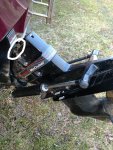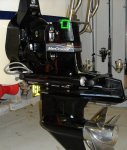Hello. I am considering the purchase of a 20ft bowrider with a 5.0 Merc/Alpha one Gen II. It's not local and so far I have only seen pictures. The skeg is damaged, and the prop has been replaced. Seller states that he has owned it for one year, and shortly after purchase a year ago, he hit rocks in shallow water. Broke skeg and chipped the prop. He claims the marina mechanic says just use it as is because the lower unit function is not impaired, so that's what he did. He claims many outings since without issue, and now wants to trade up to a bigger boat.
Now quite possibly that is accurate. He is completely open to a lake test and any inspection I require. But the possibility remains that a lower unit problem is the reason for the sale, so my question is - to what degree can I evaluate the functionality and condition of the lower unit? What if anything can I do in someone's driveway or during a lake test to evaluate? The boat is a 1996 model. Any advice appreciated.
Now quite possibly that is accurate. He is completely open to a lake test and any inspection I require. But the possibility remains that a lower unit problem is the reason for the sale, so my question is - to what degree can I evaluate the functionality and condition of the lower unit? What if anything can I do in someone's driveway or during a lake test to evaluate? The boat is a 1996 model. Any advice appreciated.





















